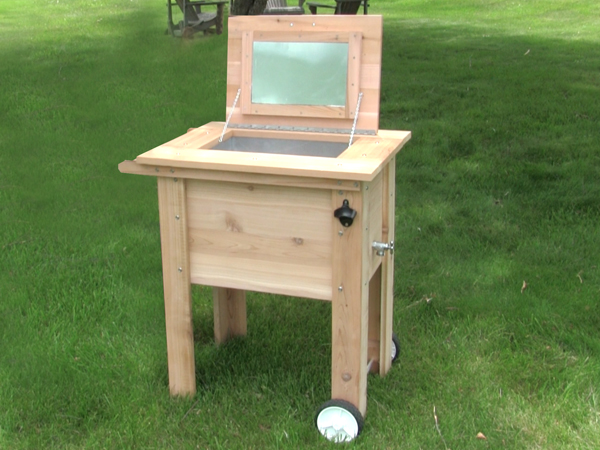
I’m looking for ideas on where to get or how to make cooler linings for my outdoor custom coolers. Any ideas? – Kelly Riedel
Rob Johnstone: You could use 1″ Styrofoam™ and then cover that with plastic laminate … like from a kitchen counter. But if it was me, I’d go to a place that sells foam (there are actually a bunch of them) and just ask them what they have that would work.
Tim Inman: I’d love to see your coolers! That would really help giving you choices. But … there are two categories that immediately come to mind: fiberglass or metal. For more traditional work, such as liners in old iceboxes, we use real copper whenever we can. It folds, bends and solders very easily. Simple sheet metal fabrication tools are available from various sources at affordable prices. Galvanized steel (duct work tin) can also be used, although it is not as elegant. Fiberglass may not have the “creds” that copper box liners do, but don’t overlook it as a solution. Working fiberglass does require a bit of a learning curve, but it is not a steep curve. YouTube can be a real source of education here. The “show” coat – which is often the first layer or “gel” layer that goes into a mold, but sometimes the last layer applied in a buildup – can be finished to look like just about anything. Stone, copper metal, or even wood are possibilities. Making fiberglass look like marble or granite is really pretty easy. Of the two, copper is always classy; fiberglass is waterproof, usually cheaper, and will last forever.
Chris Marshall: If you are still in the planning stages of your cooler designs, it might be worth finding a suitable liner first and then designing the cooler shell to fit around it. Maybe there are readily available, refabricated foam liners already out there, such as economical picnic coolers, minnow buckets and the like that could work with the shape of the shell you have in mind. The design might even allow them to be easy to replace, if that’s ever necessary. Readers, are there other ideas you’d care to share for an easy-to-install, sturdy insulating material that might adapt to a variety of cooler interiors? I’m sure Kelly would appreciate hearing from you, too!





